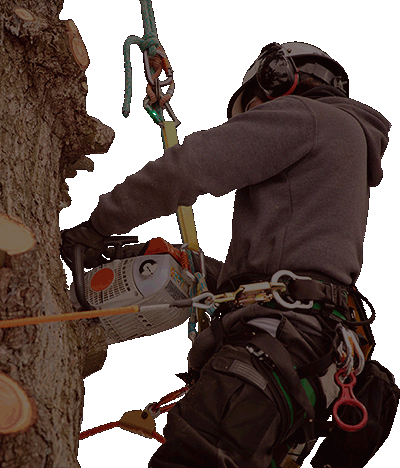
The splash of jumping into a pool. The clink of ice cubes in lemonade. The whisper of swaying Spartanburg tree leaves. Those are the sounds of summer we simply can’t get enough of.
The one song you’d skip on your summer soundtrack? Probably the rhythmic (and incessant) chirping of cicadas, a common summer Spartanburg tree pest.
If you hear or see cicadas in your yard, are they just annoying, or can they do damage?
How to Stop Cicada Tree Damage
When will the cicadas go away?
First thing’s first, let’s talk about how long cicadas will be around for. There are two types of cicadas: annual cicadas (also called dog day cicadas) and periodical cicadas (also known as 13 or 17-year cicadas).
Periodical cicadas live underground for either 13 or 17 years and emerge in either May or June. Then, they’re around for 4 to 6 weeks before burrowing underground again.
Annual cicadas come out later in the year (July and August) and stick around for about 2 to 4 weeks.
What Spartanburg trees do cicadas eat? Fruit trees? Oak trees?
Cicadas actually don’t eat Spartanburg tree leaves or branches. Instead, they create slits in Spartanburg tree branches to lay their eggs. Those splits weaken the Spartanburg tree over time, and later, you could see those branches breaking, withering or dying.
Once the cicada eggs hatch, the critters attach themselves to the roots of the tree. Where literally hundreds or thousands of cicadas feed on Spartanburg tree and grass roots for either 2 or 3 years–or up to 17.
Cicadas prefer to lay eggs on branches that are 0.25” to 0.5” round. So, that means they prefer:
- Oak trees
- Maple trees
- Fruit Spartanburg trees (especially cherry and pear)
- Hawthorn trees
- Redbud trees
- Young Spartanburg trees since these branches are the perfect diameter
How can I keep cicadas off trees?
Because cicadas favor young trees, wait until next year to plant new Spartanburg trees if periodical cicadas are going to emerge in your area.
Or if you already have planted a young Spartanburg tree or have one of the Spartanburg trees mentioned above, you can protect it from cicada damage by wrapping susceptible branches with mesh netting.
Cicadas have already damaged my trees. Anything I can do?
Generally, mature Spartanburg trees can sustain the minor damage from cicadas. But, young Spartanburg trees can be hit harder.
If you first saw a lot of cicadas, followed by slits in your tree’s branches, act fast–especially if your Spartanburg tree is younger. You’ll want to prune those branches off within 6 to 10 weeks. That way, you’ll remove the eggs before they hatch and move underground to feed on the tree’s roots.






